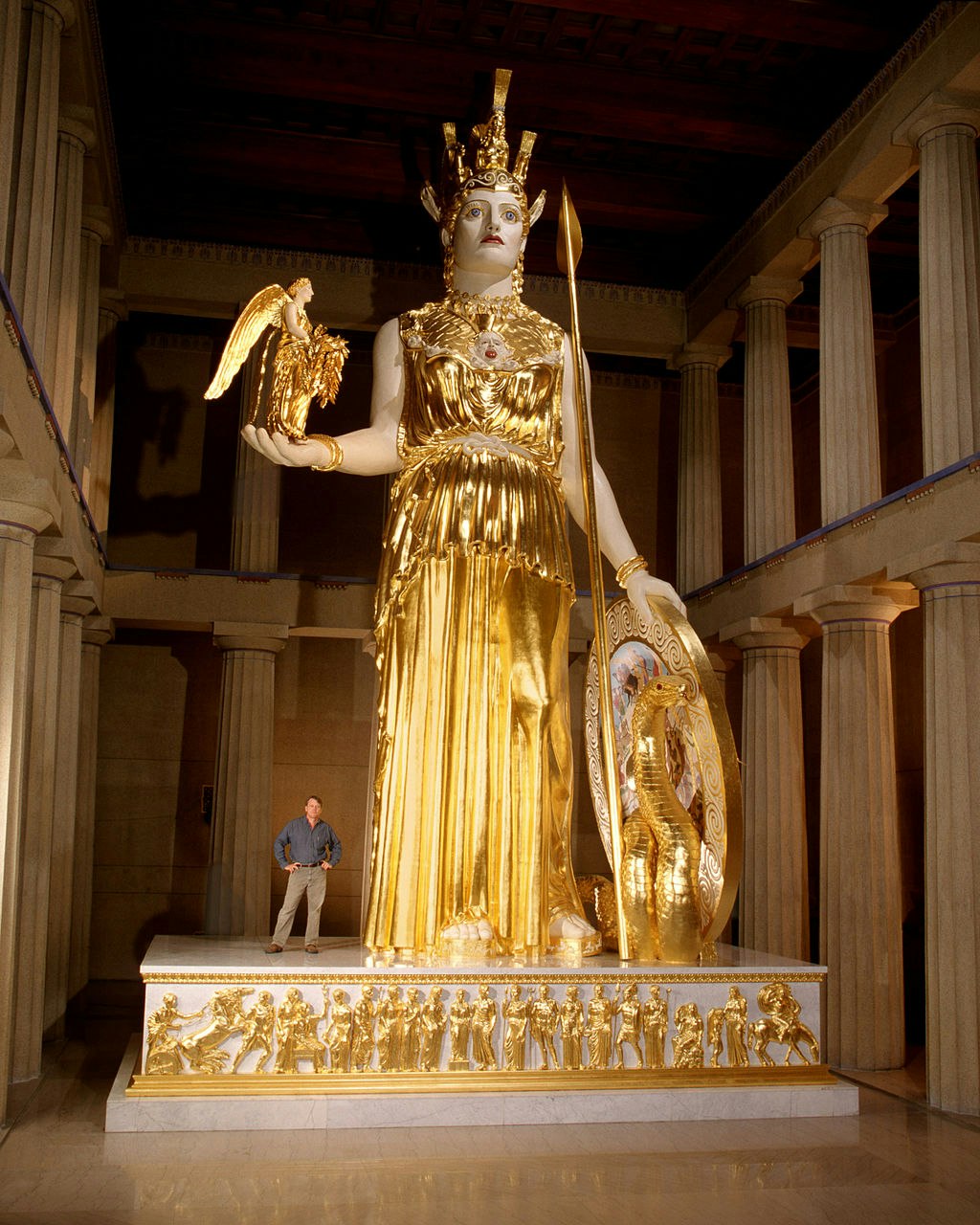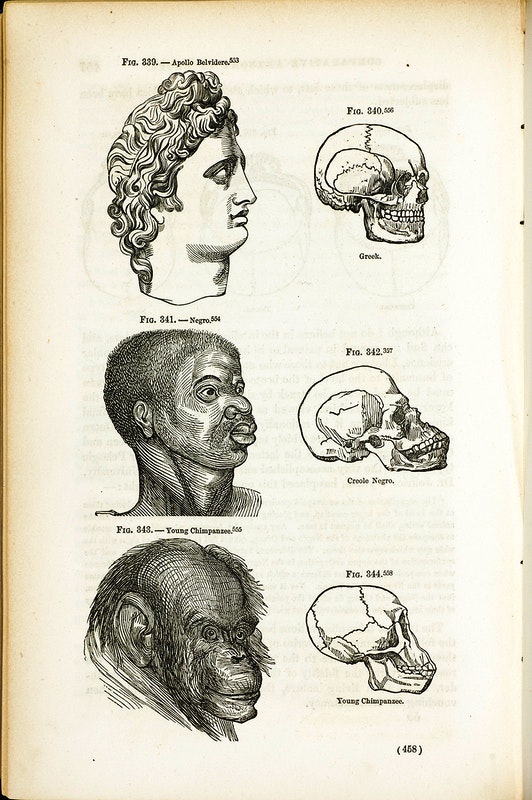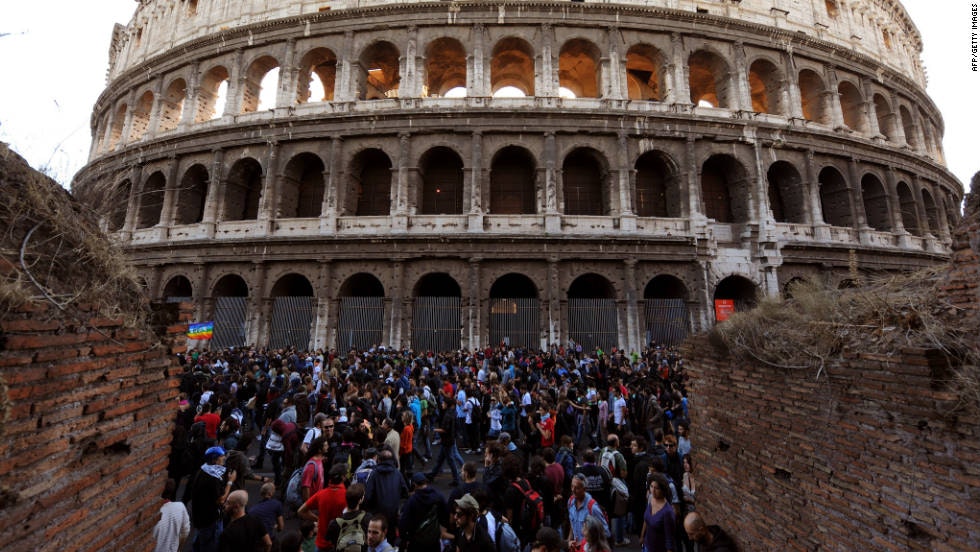Empty the Museum, Decolonize the Curriculum: For the (Roman) General Strike
How does white supremacy make itself normal and the given against which other actions are judged? In Black Skin, White Masks, Frantz Fanon claimed that cartoons and other forms of popular culture taught (white) people how to be racist. What teaches them/us how to be ‘white’? Whiteness demarcates the boundaries of the space of appearance and makes it a space of representation. To be admitted to this space is to not be, or have been, enslaved. And to be of the imperial group rather than the indigenous.
There is a myth of foundation that precedes ‘1492’ and is now being circulated as a key meme of ‘European heritage,’ white supremacy’s new clothes. The alt-right racializes Greece and Rome as ‘Nordic’ and white, seeing civilization as a chain of connection from classical antiquity to medieval Europe and culminating in the United States. The extremist Richard B. Spencer, now getting a good deal of media attention, advocates for “the creation of a white Ethno-State on the North American continent…. On one level, it would be a re-constitution of the Roman Empire.”
Awkwardly, elite education is still presumed to begin with the classics. The latest selective high school in New York City (public schools requiring an exam for admission) is The Brooklyn Latin School. Students not only study Latin, they speak it in school because, the school claims, “the study of Latin grounds our students in the foundational elements of American society.” My own department had a discussion about creating a Great Books course this year after it became clear that students no longer read the Iliad. This classical foundation extends across ‘Western’ knowledge from art, to law, museums and even critical theory.
The centrality of classical learning has persistently been displaced into white supremacy, which is not accidental as Derrida pointed out long ago. In order for it to be possible to begin ‘see’ otherwise, this body of knowledge has to be made to mean otherwise. Let’s call this strategy decolonizing, in affiliation with South Africa’s ‘decolonizing the curriculum’ movement. What is central here is that decolonizing is not simply about content but about “hierarchical relations of authority,” to borrow a phrase from South African student activist Brian Kamanzi. It involves methods of learning, questions of assessment and the goals of the institution. Take museums and critical theory, for example.
The Whiteness of the Museum
It’s never far to the white marble statues of Greece and Rome from every Western museum entry hall. In the Metropolitan Museum in New York, they are placed in light, high-ceilinged rooms right next to the entrance. African objects, of which the Met has an amazing collection, appear in dark, gloomy spaces. Native American work? One small gallery which is as far away from the ‘American’ wing as it can physically be.
The culture known to us as ‘Greek’ was formed in part from Middle Eastern, Phoenician and Egyptian practices, as Martin Bernal showed. Further, the sculptures and buildings of antiquity were so brightly colored in their original form that they look like cartoons to present-day eyes. Sculptor Alan Lequire’s reconstruction of the golden Athena Parthenos statue by Phidias, once housed in the Parthenon, looks like it would be at home in Donald Trump’s apartment. The received classical ‘whiteness’ is a cultural fantasy.
This chromatically white whiteness was disseminated in nineteenth century works like Josiah Nott and George Gliddon’s Types of Mankind (1854), a pro-slavery, anti-evolution best seller. Their chart showing the presumed difference between chimpanzees, Africans and ‘Greek’ skulls used a classical sculpture known as the Apollo Belvedere to depict the Greek type. These were held to be entirely separate species, ascending in order of what they called ‘civilization’ but not related.
Today’s museum culture has set aside skin color but continues to evoke white supremacy in its structured ladders of ascending culture. The basic template for museums and art galleries ascends from Egypt to Greece, Rome, Italy, France, the United States and culminates in the global contemporary. ‘Other’ cultures are physically marginal within the museum space or addressed in separate buildings.
White ‘Theory’
This ascending ladder of civilization finds its corollary in the distinction made by McKenzie Wark between ‘high’ and ‘low’ theory. ‘High’ theory is hard, philosophy-based, discussed mostly in universities and is mostly the terrain of white people, with obvious and notable exceptions. When race, sexuality or gender are included, it gets relegated to ‘low’ theory. To be clear, I like ‘low’ theory, although I prefer to call it open, as opposed to closed.
The ‘highness’ of high theory creates a hierarchical relation of dominance that rests at base on a certain form of white supremacy. Here, it does not mean simple racism but that the texts one ‘must’ consider begin with Homer and Plato, run via the white Enlightenment to Heidegger and all the French men of recent decades. None of these thinkers were vulgar racists – well, except all the Enlightenment ones. And Heidegger. But the French were for the most part not racist, except insofar as they ignored race, racism, colonialism and white supremacy, which they mostly did, with exceptions that prove the rule, including some of Derrida and Deleuze and Guattari.
Archetypal Romans
Roman archetypes continue to haunt high theory and foreclose present understandings by failing to set aside the ‘ladder of civilization.’ Take Giorgio Agamben’s concept of homo sacer, the person that can be killed with impunity. Agamben finds this figure from Roman history to be a clue as to how law can create the state of exception in which the law is suspended to defend the rule of law.
The trouble is that the evidence for homo sacer comes from the work of an early 20th century anthropologist named Warde Fowler. With no experience in the field, Fowler considered sacer to be equivalent to the Polynesian taboo. 1For more details, see Nicholas Mirzoeff, The Right to Look. A Counterhistory of Visuality (Durham: Duke University Press, 2011), 213–221. He was wrong about all of it. His concept of homo sacer was supposed to explore the ‘phenomena of transition’ between the ‘primitive’ and the ‘modern’ in Italy by means of comparison with Polynesia and Melanesia. It’s typical of the ‘types of man’ era of racial theory but it should have no place in any anti-racist thought.
Perhaps this doesn’t matter because Agamben was using homo sacer simply as an archetype of Western thought, not as a historical form. Setting aside the question of whether something that did not happen can be an archetype, let’s develop this by looking at the work of Jacques Rancière, who clearly does use such methods.
The Roman General Strike
Rancière often refers to an incident from early Roman history, described in ancient texts by Livy and others. War sparked a revolt in 494 BCE, causing the plebs (the common people, those not aristocrats) to go to the Senate to demand reforms. But the Senate heard not language but only a noise, as Rancière puts it, "a noise signaling pleasure or pain, consent or revolt."
This anecdote is part of Rancière’s theory of democracy as a form of government that those with title have always and already sought to prevent as the worst form of rule. While the ancient historians and philosophers that have long been canonical uphold such a view, more recent scholarship has used other sources to create a very different understanding.
In her new history of Rome, Mary Beard notes that the uprising "launched a long series of concessions which gradually eroded all significant differences between patricians and plebeians." Notably, it was the burden of debt that pushed the plebeians to direct action in the form of a general strike, including refusing military service, withdrawing agricultural labor and living in camps outside the city. The Roman historian Livy disparagingly described how ‘a thousand dissident and petty groups were whispering and putting their heads together.’ In other words, there was direct democracy. The strike won the plebeians their own assembly as part of the legislative process and tribunes to represent their views to the Senate.
Nineteenth-century radical historians created lengthy accounts of these plebeian triumphs that continued throughout the Republican period. They used their accounts to reinforce their call for the general strike as the means to overturn capitalism. Today we remember only one of these moments, the revolution of the enslaved led by Spartacus.
Their traces are nonetheless visible at the heart of the Western canon. Shakespeare’s Coriolanus describes events in Rome just after the 494 uprising. It opens with the people demanding a just price for corn and for their leaders to be accountable. Shakespeare presents this as foolishness and the people’s tribunes Brutus and Sicinius are depicted as scheming manipulators. It’s an anti-democratic play. In its interplay of the role of ‘voices’ and ‘news,’ it still has potential to be read otherwise, as Bertolt Brecht showed in his version of the play.
By contrast, Thomas Jefferson saw republican Rome as ‘steeped in corruption, vice and venality,’ leaving the United States as the sole example of republican virtue. Our new Caesar has similarly castigated the republic as corrupt, requiring his sole person as a corrective.
And so we need new ways of thinking about republics, Roman and otherwise. During the Rhodes Must Fall campaigns, there were bitter complaints that to do so would be to rewrite history. Only that is what historians do, every day. Writing the thousand-year history of Rome is always going to be a question of emphasis, explanation and selection. Clearly, the plebeian movements were often defeated but they did exist, they won a ‘part’ in the apparatus of governance by direct action and offer an alternative understanding of republican democracy.
If Trump is like Berlusconi, two media Caesars, remember that the 1994 general strike in Italy brought down one of the first Berlusconi governments, while later ‘responsible’ neoliberal coalitions of the center left failed.
Empty the Museum
How can we bring such understanding into the universities, galleries and museums where many of us work? How can we decolonize these spaces and respond to the challenges of the 21st century? It must surely begin with a combination of decolonizing the curriculum, challenging hierarchies of knowledge and learning, and the identification and restitution of stolen cultural property.
Responding to the challenge of such restitution in the case of the so-called Elgin Marbles, sculptures from Athens’ Parthenon, British classicist Sir John Boardman has said, “It would make an appalling precedent and it would ruin any of the major museums of the world.” And I reply: ‘let’s start the conversation from that place.’ Let’s ask what would it mean to have a museum complex, now a significant part of the $60 billion a year art market, that wasn’t about the colonial expropriation of other people’s bodies and property? That divested colonial production of materials like cotton and silver and the products of fossil fuels (not just the sponsorships, as in projects like Liberate Tate, although that is a great place to start)?
What would be left? Despite Boardman’s panic, not all cultural property would be claimed, as we can see from the precedent of Native American restitution. Significant sacred objects and human remains have been repatriated but there is no shortage of native cultural work in non-native museums.
The change would be conceptual. It would be a space where you’re willing to look at the challenge of making the new. This is a global challenge. It’s not a question of throwing out the classical objects but of creating a space that tells the story of the Roman general strike. I want an institution – whether university, museum, gallery or whatever – that doesn’t reproduce white supremacy, that doesn’t represent a prison, in which there isn't expropriated labor, there isn't extinction, and there isn't genocide. What would that look like?


